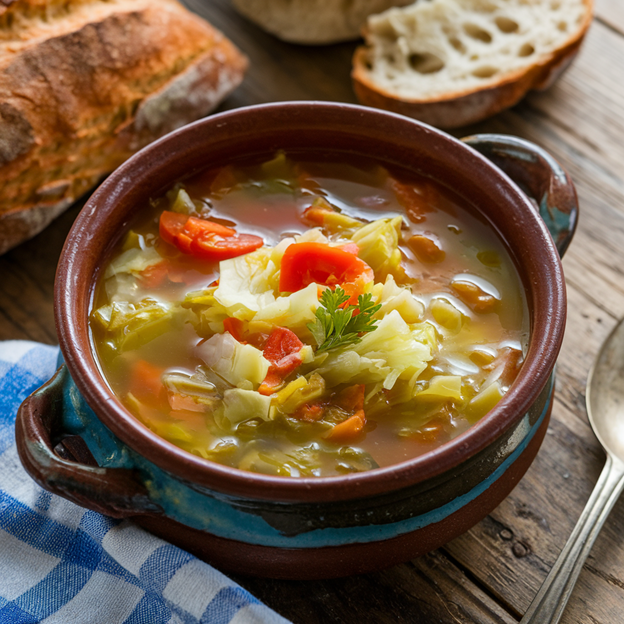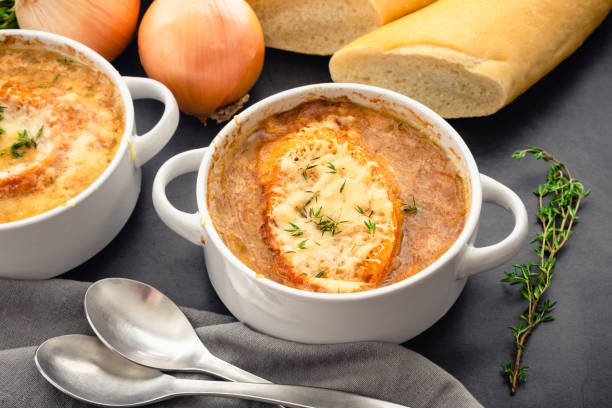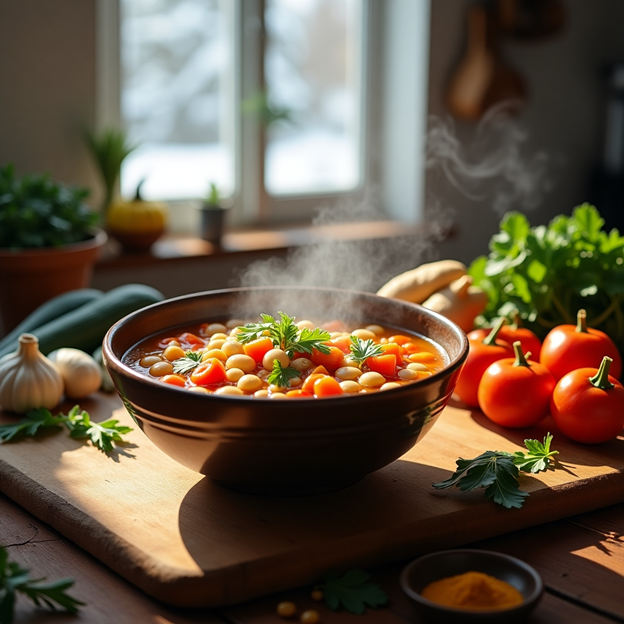I remember my first true appreciation of soup. It was a bitterly cold Saturday. My mom had made a pot of hearty beef stew that simmered all morning. The aroma was rich, savory, and deeply comforting. That first spoonful didn’t just warm my body; it connected to something in my soul. I believe soup is a worldwide comfort food.

The Seasonal Solace of Soup
When winter arrives with shorter days and colder temperatures, soup naturally finds its way to the table. The practical comfort of a steaming bowl meets our need for warmth and nourishment. Soup offers something special that other meals simply can’t match—a complete, satisfying experience that connects us to traditions and memories.
Winter brings the perfect opportunity to enjoy the simplicity of soup-making. As temperatures drop, the crockpot and soup pots emerge from storage, ready for their seasonal purpose. Unlike summer months when hot soup holds little appeal, winter creates the ideal environment for these wholesome one-pot meals. The practical benefits are undeniable—a nutritionally complete dinner that requires minimal effort and provides days of nourishing goodness. This efficient approach to cooking solves the challenge of consistently preparing balanced meals throughout the week.
The Heartwarming Heritage of Broth
My mom made the most delicious soups. She would often pull out all sorts of leftovers—vegetables, roast, and gravy—throw them into a pot with water, seasonings, some additional veggies, and canned tomatoes, and create the tastiest soup with a rich broth.
But what makes soup such an enduring symbol of comfort, particularly during the winter months? Is it merely the warmth that radiates from the bowl, or is there something deeper at play? I’ve spent years exploring the heart of soup, discovering its qualities, its health benefits, and its universal appeal, while collecting a diverse array of recipes that will warm you from the inside out this winter.
The Comfort of Food

The emotional connection to soup becomes apparent when we consider its role as a comfort food. Comfort food, like soup, goes beyond taste—it involves memory, emotion, and nostalgia. The scent of a simmering broth or a childhood favorite can remind us of moments of warmth and care. For me, it was my grandmother’s chicken soup, with homemade noodles cut by hand on her worn wooden board. For others, it might be a mother’s nourishing broth on a sick day.
Research shows that comfort foods can trigger positive physiological responses. They may release endorphins that help reduce stress and create a sense of security. When we eat familiar foods, they can soothe both body and mind, providing a temporary respite from daily pressures. These meals can even help balance the effects of stress hormones like cortisol, explaining why we often crave them during challenging times.
Comfort food isn’t just about flavor—it’s about the feelings it evokes and the connections it maintains.
Broth: Nutritional Benefits of Winter Soups

Soup is more than comfort—it’s a winter nutrition powerhouse, packed with vitamins, minerals, and antioxidants to keep you warm and nourished.
Boosting Immunity
Winter brings a higher risk of colds, but soups rich in vegetables and spices can help strengthen immunity. Ingredients like garlic, ginger, and turmeric have anti-inflammatory properties that support recovery and overall health.
Harnessing Seasonal Produce
Winter soups make the most of nutrient-dense seasonal produce like root vegetables and dark leafy greens. Visiting the farmers’ market for fresh, local ingredients ensures each bowl is packed with peak-season nutrition.
Aiding Digestion
Warm broth soothes digestion, while fiber-rich vegetables promote gut health. Soups also help with hydration, especially during the dry winter months, making them a gentle yet nourishing choice.
Plant-Based Power
Beans and legumes add protein and satiety to plant-based soups, keeping energy levels steady. A rice and chicken soup with coconut milk became a personal favorite, proving that one-dish meals can be both simple and nutritious.
The Winter Soup Symphony: Key Ingredients
Crafting a satisfying winter soup is an art—balancing flavors, textures, and nutrition. While the possibilities are endless, these key ingredients consistently elevate my creations:
Aromatics: A fragrant base of onions, garlic, celery, and carrots builds deep flavor, a technique passed down from generations of home cooks.
Herbs and Spices: Fresh herbs like thyme and rosemary, paired with spices like cumin and paprika, transform simple ingredients into rich, complex soups.
Broth: Homemade broth adds unmatched depth, but quality store-bought options work too. I keep chicken, beef, and vegetable broths stocked for versatility.
Vegetables: Root vegetables provide heartiness, while leafy greens add nutrients and color, making each bowl both nourishing and visually appealing.
Protein: From chicken and beef to beans, protein makes soup satisfying. Cooking it in broth infuses flavor, while adding it later preserves texture.

A Culinary Voyage: Exploring Different Soup Styles
My soup journey has taken me around the world without leaving my kitchen. From creamy bisques to hearty stews, there’s a soup for every mood and occasion.
Creamy Soups
Velvety and rich, creamy soups are my go-to for comfort. My butternut squash soup is a winter favorite. My sister loves experimenting with dairy-free alternatives like coconut milk and blended cashews for a luxurious texture. An immersion blender makes achieving that silky smooth finish effortless.
Hearty Vegetable Soups
Packed with seasonal produce, these soups are nourishing and versatile. My meat and vegetable soup changes with the ingredients I have on hand, and adding whole grains like barley or rice turns it into a satisfying meal.
Spicy Soups
On cold days, my daughter and husband crave the heat of spicy soups. My chicken and sausage gumbo warms from the inside out.
Classic Soups
Timeless recipes like chicken noodle soup and cabbage soup bring deep satisfaction.
The Essentials of Perfect Soup Making
Making a delicious, comforting soup is easier than it seems. Here are my essential tips for a perfect pot:
Sautéing Aromatics
Cooking onions, garlic, carrots, and celery slowly in oil or butter builds a rich flavor base. This small routine fills my kitchen with warmth and anticipation.
Layering Flavors
Adding herbs and spices at different stages enhances depth. Woody herbs like rosemary go in early, while delicate ones like parsley are added at the end for freshness.
Simmering
A gentle simmer (not a rolling boil) allows flavors to develop without breaking down ingredients. I taste and tweak throughout, letting intuition guide me.
Seasoning
Salt, pepper, and a splash of lemon or vinegar at the end can transform a soup from good to great, adding brightness and balance.
Instant Pot Magic
My sister loves her Instant Pot. In fact, she has several. It speeds up cooking without sacrificing flavor. Beans soften in minutes, and tough cuts of meat become tender with ease.
Meal Prep and Freezing
Soup is a perfect make-ahead meal—flavors deepen after a day, and frozen portions make for easy, satisfying dinners when time is short.
The Comfort Food King: A Spotlight on Chicken Soup
No comfort food discussion is complete without chicken soup—a time-tested remedy for both body and soul.
Whenever there was a series of illnesses growing up, mom’s chicken soup would come to the rescue. It not only helped soothe sore throats but provided genuine comfort as well. The warm aroma filling the kitchen was as soothing as the soup itself.
Chicken soup offers practical benefits through its nutrients. Protein and zinc from chicken, along with vitamins from vegetables, support general health, while the warm broth can help with congestion. Adding garlic, ginger, and red pepper flakes enhance both flavor and nutritional value.
Vegan and Vegetarian Winter Warmth
Reducing meat consumption has opened up a world of hearty, satisfying plant-based soups with remarkable health benefits. Protein-rich lentil soup, enhanced with cumin, coriander, and a squeeze of lemon, provides sustained energy and fullness. Black bean soup, perfected over time and topped with yogurt and cilantro, rivals the meat-based alternative in depth and satisfaction.
For special occasions, butternut squash soup offers creamy indulgence with surprising nutritional value. A touch of nutmeg and coconut cream transforms it into dinner-party-worthy fare, while its vibrant orange hue brings warmth to winter tables.
Quality vegetable broth makes all the difference. Homemade broth, crafted from weekly scraps, creates unmatched sustenance, though excellent store-bought options work well when time is short. The true joy lies in fearlessly experimenting with herbs, spices, and vegetables to create uniquely satisfying winter dishes.
The Finishing Touch: Garnishes and Pairings
The right garnish can elevate soup from ordinary to extraordinary—like the perfect accessory completing an outfit. Fresh herbs from the windowsill bring brightness to any bowl, while homemade garlic-herb croutons add satisfying crunch to clear broths. A dollop of sour cream lends tangy richness to spicy or earthy soups, accommodating different dietary preferences without compromising flavor.
For heartier varieties, melted cheese creates pockets of gooey indulgence, while hot sauce or pepper flakes—served on the side—allow for personalized heat levels. Crusty bread for dipping or crackers for crunch make perfect companions. Occasionally, bake bread from scratch for a completely homemade experience. To balance the richness, a simple green salad with a light vinaigrette complements the meal without overwhelming the palate.
Jan’s Cabbage Soup Recipe
This cabbage soup is my family’s absolute favorite, especially for my children, Teva and Joey, who request it often. It’s a hearty, nutritious dish that’s become our beloved comfort food tradition.
Ingredients:
- 2 tbsp olive oil
- 2-3 pounds pork sausage (browned)
- 1 large onion, diced
- 2 cups frozen corn
- 5-8 potatoes, chopped
- 1-2 cloves garlic, minced
- 1 medium cabbage, chopped
- 2 quarts canned tomatoes and juice (blender)
- ½ cup chicken broth (or vegetable)
- 3-4 cups water
- Sea salt and white pepper
- 2 12-ounce bottles of beer

Instructions:
- Heat oil in a large pot. Cook sausage, onion, corn, and potatoes until soft (5 min).
- Add garlic, cook for 1 minute.
- Add cabbage, cook until slightly wilted (5 min).
- Add tomatoes, broth, water, salt, and pepper
- Bring to boil, reduce heat, cover and simmer for 30 minutes.
- Add beer and simmer, covered for about 1 hour.
Tastes even better the next day! Perfect with crusty bread or grilled cheese.
Soup-Making Season

Soup-making is more than just cooking—it’s a form of self-care and a creative outlet—finding solace in a simmering pot. When I ladle hot soup into bowls for family and friends, I’m offering more than nutrition; I’m sharing comfort, care, and a moment of warmth in the coldest season.
As our journey through the world of winter soups comes to a close, I’m reminded of the incredible versatility these humble dishes offer year-round. From the zesty Red Beans and Rice that brings Louisiana warmth to my kitchen to the nostalgic comfort of Down Home Chicken Noodle and Homestyle Potato Soup, each recipe holds its own memory. The Basic Ham and Beans, paired with cornbread, and Mom’s Tasty Chili (which cleverly transforms into next-day chili dogs), showcase soup’s remarkable adaptability.
The practical benefits of soups are endless—it freezes beautifully, it makes thoughtful gifts for neighbors in need, and it offers a quick solution for unexpected guests. Whether you prefer rich bone broths or creamy milk-based foundations, the possibilities extend far beyond winter, embracing fall and spring alike.
Begin your soup adventure today—gather your ingredients, uncover your favorite pot, and surrender to the soothing art of simmering. Let aromatic broths and rich flavors transport you to comfort on winter’s coldest days. Start with my recipes, then create your own. As you share these creations with loved ones, you’ll discover that soup-making is more than cooking—it’s a heartfelt expression of love, warming both body and soul with each steaming ladleful.



